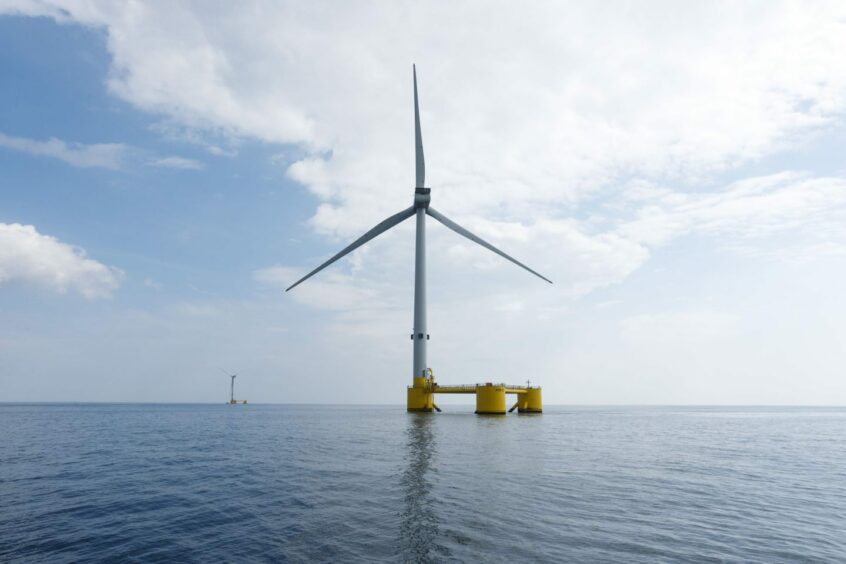
The developers of two floating wind farms secured as part of the INTOG leasing round have signed exclusivity agreements, paving the way for development later this decade.
Flotation Energy and Vårgrønn – a joint venture between Eni’s renewables arm Plenitude and HitecVision – confirmed on Thursday they had signed exclusivity agreements for the Green Volt and Cenos schemes.
Secured as part of the Crown Estate Scotland’s Innovation and Targeted Oil and Gas (INTOG) leasing round, the two schemes would provide up to 1.9GW of capacity available to power North Sea oil and gas platforms and the UK grid.
Located around 125 miles east of Peterhead in the UK Central North Sea, Cenos would provide up to 1.4 GW of capacity from between 70 and 100 floating turbines.
Meanwhile the 560MW Green Volt would see up 30-35 floating turbines anchored at a brownfield site, previously host to the Ettrick and Blackbird oil field, around 46 miles off the Aberdeenshire coast.
Flotation Energy CEO Nicol Stephen said: “Our Green Volt and Cenos projects will play a critical role in speeding up the energy transition, strengthening Scotland’s position as a global leader in floating wind.
“Participating oil and gas platforms will have electricity, currently generated by gas and diesel turbines, replaced by renewable energy. The windfarms will also deliver up to 7TWh of power back to the UK grid each year – the equivalent of providing affordable, renewable electricity for more than 2.4 million UK homes.
“In an era where the cost of living is at an all-time high, offshore wind provides an effective, low-cost solution to help the UK tackle climate change and deliver long-term renewable power.”
It’s also hoped that the two schemes will “kickstart” the development of a local supply chain for floating offshore wind, centred around the North Sea.
Olav Hetland, CEO of Vårgrønn, said: “Our pioneering projects play a key role in the energy transition. They have a direct impact by delivering renewable energy, but crucially Green Volt and Cenos are also advancing the offshore wind industry by scaling floating wind technology far beyond the size of current projects.
“By being frontrunner projects, which are already well advanced in terms of their development and the required environmental assessments, Green Volt and Cenos will contribute to establishing a new supply chain for floating offshore wind around the North Sea”.
RenewableUK’s senior policy analyst on emerging technologies Laurie Heyworth said: “Innovative frontrunner projects like Green Volt and Cenos will play a crucial role in boosting the development of a world-class floating wind supply chain in the UK for projects here and abroad.
“Our analysis shows that floating wind will provide more than half of the UK’s offshore wind generation by 2050, bringing over £43 billion in economic value and more than 29,000 jobs. It will play a critical role in regenerating coastal communities in particular, with £4 billion of public and private investment needed to transform up to eleven ports across the UK into industrial hubs for mass roll-out of floating wind by the end of the decade.”
Combined, the developers say the two schemes are estimated to create over 8,000 jobs during construction as well as several hundred jobs during the operational phase, delivering around £6 billion of gross value added (GVA).
Under the proposed timeline, a final investment decision on Green Volt is eyed for the end of 2024, with full operations commencing in 2027. An FID for Cenos would arrive in 2026, with construction beginning the following year.
Recommended for you
